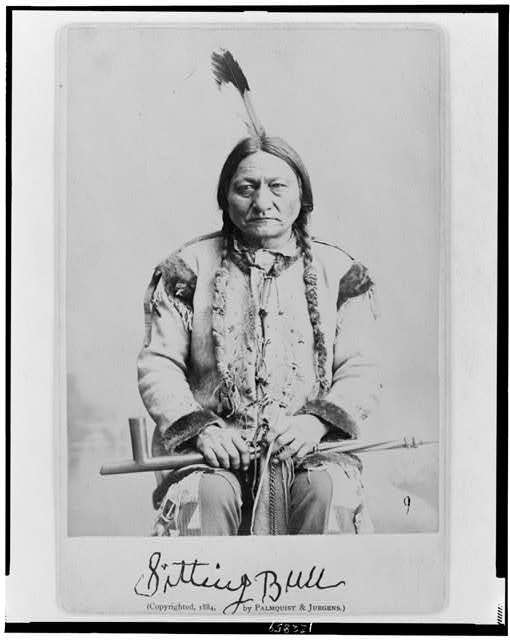Perceptions of the Ghost Dance
White Americans and the United States government didn't view the Ghost Dance movement simply as religious – but rather they viewed it as a direct threat to their power and existence on Native lands.
Sitting Bull was a Hunkpapa chief and holy man who was highly influential in his communities. This is something that the U.S. feared – especially as the Ghost Dance movement spread throughout the Sioux in 1890. Ultimately Sitting Bull embraced the Ghost Dance and was murdered by the U.S. government to prevent any further spread of this pan-Indian spiritual movement.
Source: The Indian’s Friend. Miss Collins. (right)
“It is too horrible to think of. They fall down and foam and froth, and wallow like dogs. They jump up, and run and whoop and screech like mad men. Even the Indians say it means war.”
“He [Sitting Bull] has only the name and glorification of himself at heart, and he knows and admits that civilization will kill his power. He says also it is better to die a savage than to live a white man.”
These publications use language to instill fear. “Sitting Bull the most dangerous leader”, “menace”, “the hostiles”, “wallow like dogs”, “screech like mad men” all to imply that the Ghost Dance and its supporters are dangerous and invalidates any reason to perform the Ghost Dance at all.
Source: The North American Indian. Edward S. Curtis. (above)
“In November the War Department was called upon to prevent an outbreak… it was decided to arrest the leading chiefs implicated… There were causalities on both sides in this skirmish, and among the slain was Sitting Bull.”


